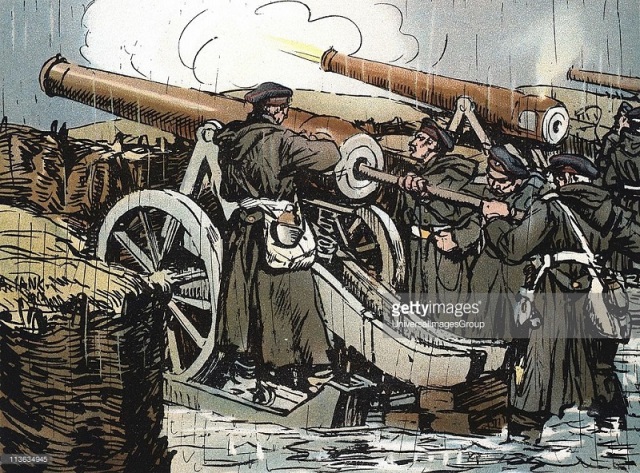
I read a lot. (Does that surprise anyone?) And most of the fiction I read is either fantasy, sci-fi, historical, or some combination of the above. All of those genres frequently involve armed conflict, and military action is one of those things that it is very easy to get wrong. I have a great deal of respect for books and I try to treat them well, but when Hiro Protagonist and his group of brave souls are all sent off on Operation Certain Death it gets difficult to restrain the urge to throw it across the room.
To be fair, it is difficult to get the details right… or at least right enough to be compelling. Most people don’t really grasp what is involved in fighting a battle, to say nothing of a war. And one of the most underappreciated aspects is the logistics involved in fielding and supplying military forces. Logistics is not glamorous, but it is essential. So in this article I’ll be taking you through a worked example of something I have direct familiarity with: an artillery battery in action.
A quick word before we get started: I’m going to be talking about modern artillery, because that’s what I’m familiar with. But more or less the same logistics considerations will apply for shifting any military unit with similar quantities of personnel and equipment, regardless of era and technology. Where reasonably practical, I’ll look at the options in different settings.

Now let’s look at the basics. We’re talking about a modern light artillery unit equipped with 105mm guns. This isn’t the heaviest artillery available, or even the calibre most commonly used. It is, however, directly comparable with gunpowder weapons throughout the ages, and weapons of similar dimensions have appeared in conflicts ever since cannons became widespread.
If you’re looking at settings without gunpowder weapons however, then things change a little. Heavy siege engines – catapults, trebuchet, etc. – were often made where they were needed. All you need for them are timber and tools, and this describes most of the world for a good chunk of history. There’s a reason engineers and artillery have a close relationship! The non-wooden parts would be carried in the unit’s baggage train, and the Romans used this method for some of their artillery as well. But this only applies to siege weaponry.
Field artillery (what armies use when they are manoeuvring and fighting each other) can’t usually be made up on the spot, so that had to be brought along more or less complete. The usual method was to either put it in or mount it on a cart. Some field artillery could be taken apart and carried on mules, oxen, or – if you were desperate – the backs of some of your soldiers, but that did make it slower to bring into action. Anyway, back to the modern day.
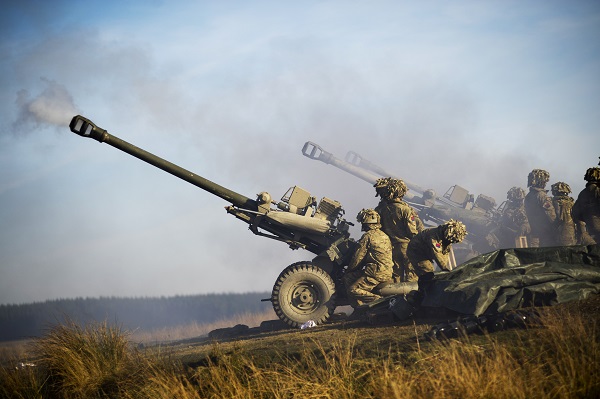
I wanna introduce you to a close personal friend of mine…
This hypothetical artillery battery is equipped six L118 Light Guns (yes, it should probably be eight… but real-world military units are never at full strength). The L118 is perhaps the best 105mm artillery piece in the world today. It is extremely accurate, capable of dropping shells within more or less the same crater from 18 kilometres away. A standard contact-fused high explosive shell has a lethal zone of up to 100m and can throw fragments much further, so it doesn’t take many of those landing nearby to really ruin someone’s day.
The shells themselves weigh 15kg in their packing containers, and a good crew can fire as many as eight shells per minute. If you want to get a fire mission off quickly and move to avoid counterbattery fire, that is exactly what they would do. A more practical sustained rate of fire, however, is one shell per minute.
So let’s start with some numbers: six guns, each weighing 2 tonnes and about 9m long in firing position. A basic load of ammuntion per gun is about 40 or 50 shells, which might or might not be enough for a day of intermittent firing – let’s call that another 1000kg per gun of ammunition, tools, and maintenance supplies. Then there’s the seven-person gun crew along with their personal weapons and equipment. Perhaps another tonne there. How do you get all this gear to where you need it?
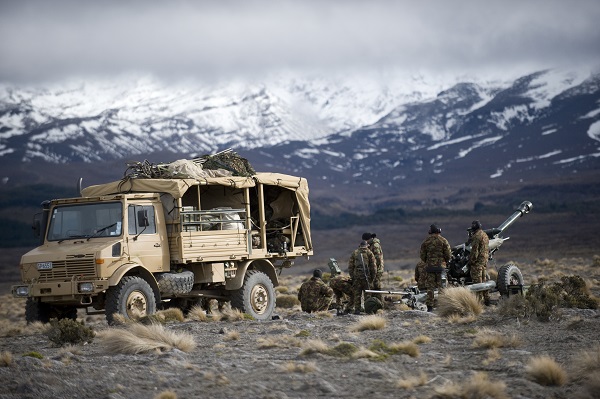
I spent an awful lot of time in places like this, except without the good weather.
The usual method is to use a truck. When I was in the army we used a version with a 2.5 tonne capacity to tow the gun and carry the crew, along with their personal gear and the essential tools for using the gun. Another couple of trucks would carry the basic ammo load for the battery and drop each gun’s allocation off to them once the battery arrived at its gun position.
Self-propelled artillery – where the gun is built into the vehicle that carries it – is much quicker to bring into action, and makes it easier to avoid counterbattery fire also. It is more expensive and difficult to keep running, but the advantages are worth it for an army that can afford them. Futuristic military forces might have nothing else.
Back in the past, your only option is horses (or the local equivalent thereof – maybe your setting has dogs, emus, or giant hamsters; I ain’t judging.) Oxen are powerful but too slow to really keep up with an army on the move. A 2 tonne load like the L118 would require a minimum of eight horses for sustained movement, and then you need perhaps four more to move the ammunition, gear, and so on for each gun. You can see why it was important to look after them.

It’s important to look after your vehicles too, so you don’t end up doing this all the time.
By this point we’re up to eight trucks just to move the guns, crews and first-line ammunition. But wait, there’s more! Modern artillery needs a command post. This is the communication and calculation centre. It’s where calls for fire arrive, get turned into directions for how to aim the guns in order to hit the target(s), and are passed on to the gun crews. This needs a minimum of eight people if you want it running around the clock.
So there’s at least another truck’s worth of people and gear for this, and you’re better off with two. Futuristic artillery might have computers built into the guns which can handle all this; historical artillery didn’t shoot at anything it couldn’t see so it didn’t need it.
But you also need a headquarters element to keep track of everything and everyone, arrange supplies and repairs, and do all the other umpty-hundred other tasks. Repairs will need at least two specialists and a lot of heavy and expensive tools; supply needs an overworked quartermaster and a couple of equally-harried assistants; communication needs between two and four signallers or couriers; and then there’s the battery commander and his assistants. Count on at least two more trucks for them, plus three or four jeeps (or whatever you’re using).

And we’re not finished yet. The command post needs someone to tell it where the targets are. Other military units nearby can do that if they have the training and equipment, but there’s no substitute for having your own specialists going out and locating targets. FO (Forward Observer) parties can be quite small – perhaps four people – but they have to cover a lot of ground. You probably want a minimum of two of them, each with a jeep or something similar. Once again, futuristic and historical artillery probably don’t need to worry about this.
Been keeping track of the numbers? So far we’re up to:
- 6 guns
- 70 people
- 12 trucks
- 6 jeeps
That is the BARE MINIMUM to have an effective artillery battery. If you’re using horses or other animals, you also need people to look after them (and you might have more horses than people). That is also not including any attachments – engineer support, air defences, sensors and locating equipment, and so on. You could easily end up with over 100 people. Hopefully the scale of the problem is starting to become apparent.
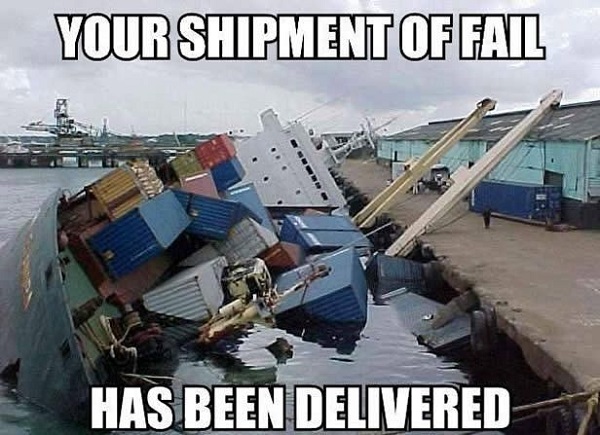
When logistics works well, nobody notices. When it works badly…
So you have your 70 people and all the other equipment for an artillery battery, they’re all set up and ready to go. Grand. How do you keep them in fighting condition?
First, food and water: each person will consume about 2kg of food per day, the same in water, and another 1kg or so in other stores (batteries, electrical tape, pencils, sunscreen and chapstick – don’t laugh, sunstroke is NOT a joke – and so on). Figure on 5kg per person per day all up in a temperate climate. Horses will go through about five times that, call it 25kg per horse per day. Just for people, we’re looking at 350kgs per day of stores.
The fuel tank on each truck is at least 200 litres, and if the battery is moving around a lot it could go through half of that every day. Let’s say another 100kgs per day per vehicle (jeeps burn less fuel per km travelled, but they get used a lot more). 1800kgs per day of fuel.
Ammunition is a different problem. A quick fire mission might only need 20 shells or so in total, high-value or large targets might need more than 50. But that is for a quick ‘stonk’, not an ongoing bombardment. If you’re bombarding something seriously, then each gun will fire about one shell per minute. That’s 360 shells per hour for the battery as a whole, and the gun crews can keep this up all day (it is possible to sleep through an outgoing fire mission if you’re tired enough, I’ve done it myself). You quickly get into the situation where you need a more or less constant convoy of vehicles bringing ammunition to the guns. That means a railway line or lots of trucks, horses will not be able to keep up with the sheer quantity of ammunition required.
These days large-scale bombardments are unusual, but keep in mind that the further back in time you go, the more likely they are to happen. For now, let’s work on an average of 50 shells fired per gun per day. For 6 guns, that’s 4500kg of ammunition every day.
All up, we’re looking at just over 6.5 tonnes of supplies every day to keep the battery operational.
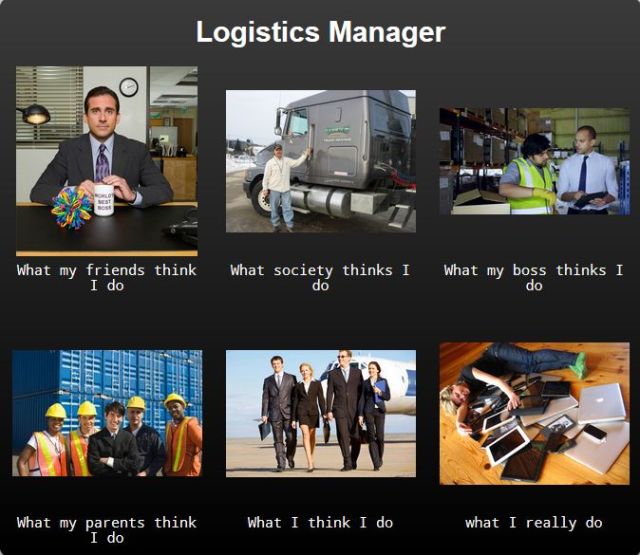
Historical artillery gets an advantage here – horses etc. may eat a lot but they don’t need fuel. Artillery of earlier periods is also much less fussy about the ammunition it uses too. Finding rocks for catapults to hurl isn’t too hard. Gunpowder weapons do need gunpowder, but captured enemy stocks will do just fine – they can shoot suitably shaped rocks as projectiles, and in fact the earliest guns usually did. But someone still has to go out and find this stuff, then get it back to the battery. We’re still talking tonnes of supplies every day. That means much more manpower, even if the stores are free for the taking. If they’re not, you will need to persuade whoever has them to give them up.
Historical armies were not always polite about this, which is one reason an army arriving in the neighbourhood was a disaster for everyone living nearby. No matter if they were friendly or not, they would still eat everything and cut down trees for firewood. Roads would be wrecked by carts and cannons, chickens would be stolen, and that’s before the fighting started. The best armies would pay for the damage they caused and the goods they took with good gold or silver, but that wasn’t as common as the local inhabitants would have liked. Whether you’re getting supplies from the locals or not, it’s still a problem even today.
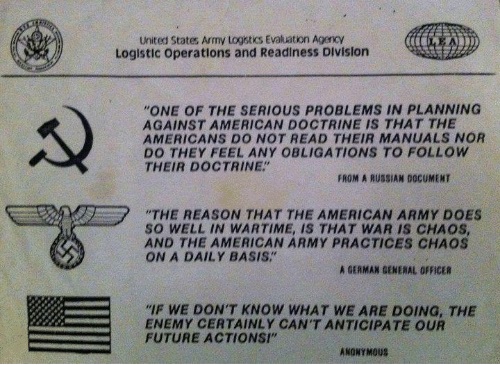
I’m not saying it’s all deliberate, mind you…
So there’s a quick overview of what it takes to keep an artillery battery in action for a day. The quantity of stores required every day is not impossible to handle – it’s only a few trucks worth, after all. But organising how to get it from the supply heads to where it’s needed is not easy, and keeping the battery operational and mobile is a significant organisational challenge. It is also very expensive in terms of equipment and training, to say nothing of the people and animals involved. But even so, it’s a lot cheaper than not having the organisation in place when you need it.
Question of the post: What helps make military activity in a story believable for you? And what important aspects often get overlooked?
I avidly absorbed the ‘Hornblower’ series of books as a kid, and the business of getting a sailing ship into battle was very detailed (and, I believe, well researched). Later I chanced upon the ‘Flashman’ series, Ditto on the research and details. The sequence describing the Charge of the Light Brigade, for example, is well worth the read.
Warfare, historic and modern, is less of a mystery to me than to most (I like to think, anyway).
Off the top of my head, the issues not mentioned here that also had a huge effect on military effectiveness (and anyway, they’re not part of you brief) are in no particular order:
Weather (which is seldom kind)
Dysentery (which is never kind)
Incompetence (a specialty of British High Command over many generations)
Hubris ( a specialty of certain famous commanders)
& Sheer Bad Luck. (We’ve all had that, but usually not the cause of thousands dying in a day)
i make a point, in the few brief battles I have described, to include a smattering of all.
The issue of mass logistics has yet to come up, but I’ll keep you post in mind when it does and ensure my horses are carefully numbered and my cannons well stuck in the mud.
LikeLiked by 1 person
If you like the Hornblower books, you might also like the Aubrey & Maturin series. Patrick O’Brian wrote very well about Napoleonic-period war at sea, and I personally found his writing style more enjoyable. Although of course I am quite persuaded of your expertise on all manner of conflicts.
The point about incompetence is an interesting one, and I’m not sure it is peculiar to British commanders. Monty famously downplayed his successes, rather modestly saying that “everything went according to plan”. Perhaps so, but coming up with the plan and then implementing it is not a trivial task at that level. It might be a case of British understatement obscuring their talents at some points.
But as long as the horses are bogged down and the machinery doesn’t have the requisite 3/8ths Gripley, I’m sure your military writing will be realistic!
LikeLiked by 1 person
AFA Monty goes, the “everything went according to plan” was what I would call British “false modesty”. He made comments like that even when things went balls up. My opinion is that Monty was mediocre although it might be because the historical books that I’ve read were just written by his detractors. However, when you look at his record you see glaring failures such as his inability to take Caen on D-Day, Operation Goodwood, Market Garden, and the Falaise Gap, of which any one should have gotten him relieved IMO. Even his pursuit of Rommel was so tentative that he allowed him to continue to get away from him because Rommel would create a rearguard defensive position and Mony would stop until he had amassed a major force. By then Rommel had retreated and formed a new defensive position. One book pointed to Monty’s overuse of artillery in southern Italy where he created so much ruble that he slowed his attack and allowed the Germans to break contact in their retreat. Patton OTOH quickly figured that out.
Now I don’t have that much knowledge of the British commanders, but some of the ones that deserve criticism besides Monty are General Percival (surrender of Singapore), Ritchie (Tobruk) and Bomber Harris. One book on Dunkirk condemned the High Command for basically stabbing the French in the back by not telling them they were evacuating and then initially not allowing the French troops on the ships.
Now the worst of the High Command in WWII? My nomination goes to Winston Churchill. You had the Gallipoli disaster in WWI (which cost the ANZAC troops dearly), Dieppe raid (which cost the Canadians dearly. Do you see a pattern here?), Greece and Crete, and the whole “soft underbelly” concept. Oh and can’t forget his support of Monty in the face of all his failures.
YMMV
LikeLike
Churchill was full of good ideas. The problem is that he was also full of bad ones, and it wasn’t always possible to avoid him sicking his oar in on the latter. Liddell-Hart in his History of the Second World War seems fairly balanced in his views on the various generals, although it’s worth taking some of what he says with a boulder of salt. I don’t think L-H ever got over feeling snubbed in the inter-war years, and I suspect that not everything he reports about German views came from the people he interviewed.
LikeLike
Ah, the “tail” that’s need to keep the horse moving so to speak. The book I’ve been reading: “Engines of War” deals with the effects the introduction of railroads had on warfare starting int he 19th century. Suddenly (historically speaking) massive armies could be deployed and supported from their rears without having to live off the land. Just as you described the support needed to be able to service a gun you also need to move men and materials for infantry. In combat areas, roads would become rutted and the land torn up and muddy so the area became almost impassable to horses and wagons. One thing I learned from the book was the introduction of smaller rail lines (30 or 60 cm for example) that were utilized to get material the “last mile” to the front lines where full size trains would be easy targets. One of the big problems with rail lines was that the logistics had trouble keeping up with the troops until lines could be built or repaired. It limited the ability of armies in WWI from pressing the attack beyond a certain point because of the inability of their resupply across “no man’s land” until new lines could be constructed. In the interim the enemy could resupply and counterattack and drive the attackers back. The introduction of trucks changed things again. In fact, one show I watched said that the best weapon that the Americans sent to the Soviets were trucks which allow them to quickly move their artillery and to supply troops in areas without rail.
LikeLiked by 1 person
Yes, trucks and railways make a huge difference. So do helicopters as a matter of fact, the Soviets had a theory that “boot is to track as track is to rotor” which makes a good deal of sense. The importance of cargo shipping should also not be underestimated – that and railways are the two cheapest methods per tonne-kilometer to move goods.
LikeLiked by 1 person
Thanks for the reply
I can see the Soviets’ point. Vertical lift has probably changed land warfare as much as the train and truck. I remember that during Desert Storm the allies prepositioned fuel bladders for the tanks in the desert (putting the “tail” before the horse as it were) which allowed them to keep moving faster since the M1’s gulp fuel. Hard to do with trucks.
Cargo shipping wasn’t as much of a deal for the land powers in Europe, but for the US and other nations that are separated by water it’s a really big deal. Just loading a ship (combat load) is critical. Missing something because it’s stuck in the bottom of the ship can cause real problems. I understand that was a big issue in WWII where they had to unload and reload the ships when they arrived in Australia. I wonder how the container ship has affected logistical thinking in that regard.
LikeLike